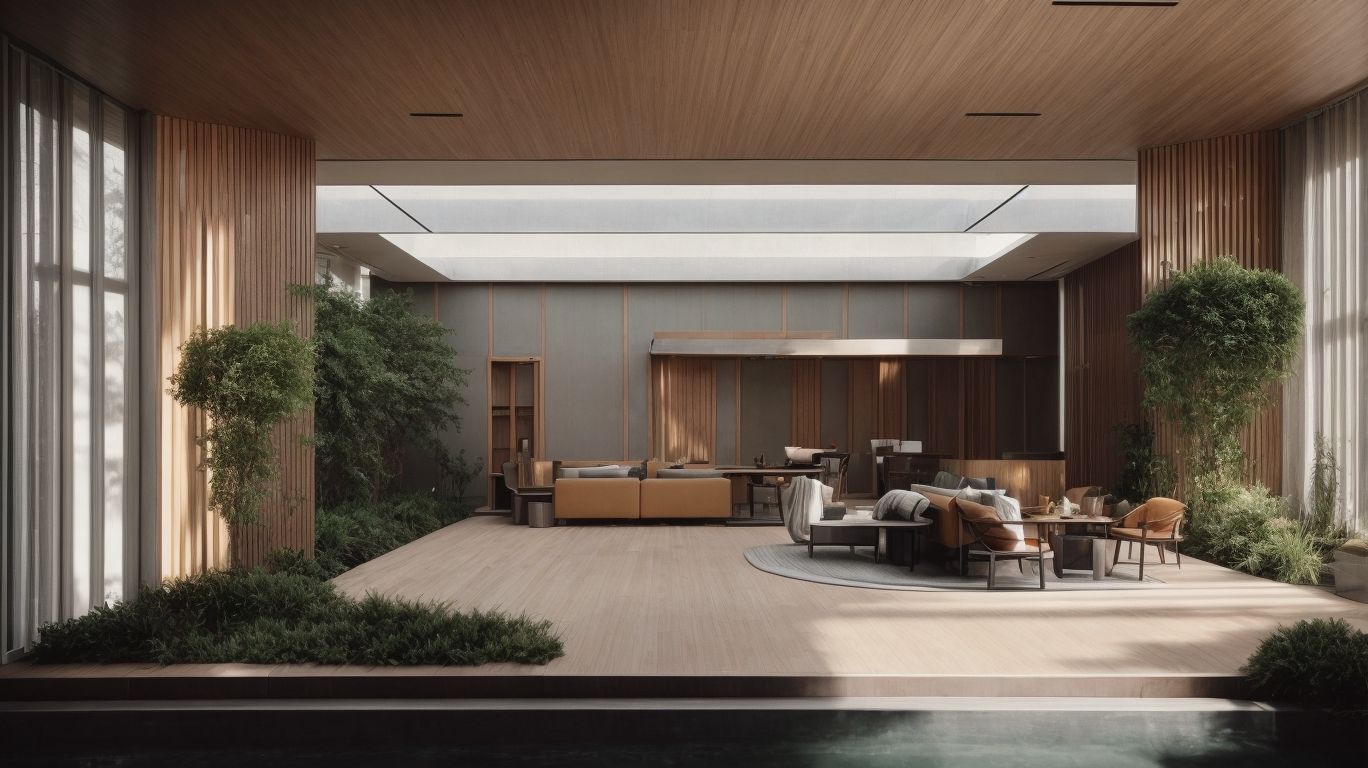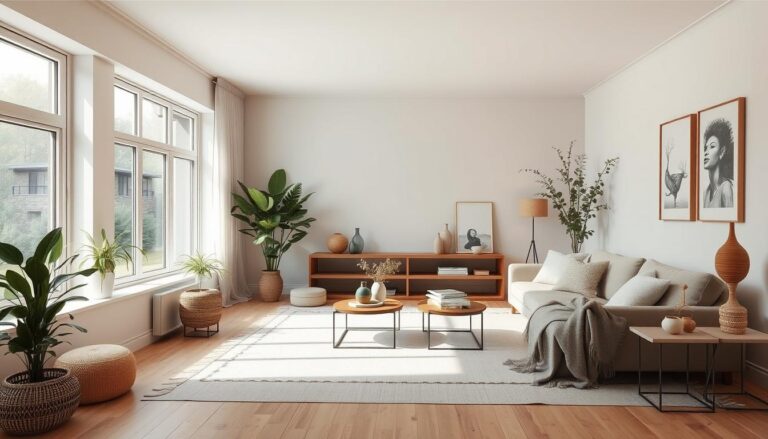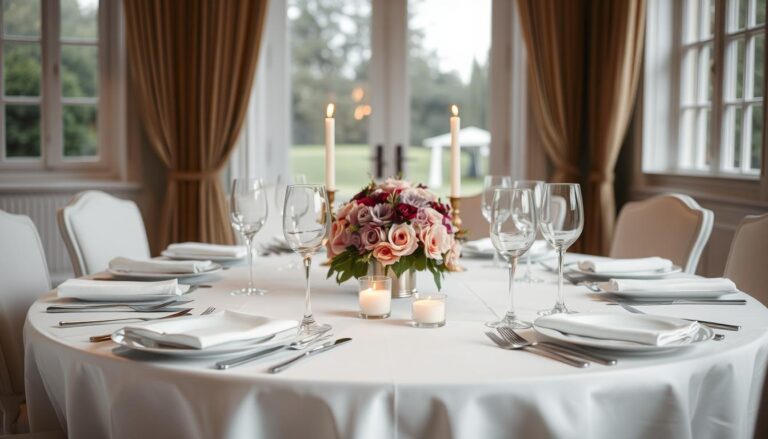The Intersection of Graphic Design and Architecture: How it Enhances Interior Design
Graphic design plays a crucial role in shaping the visual aspects of architecture and interior design, integrating creativity and functionality to enhance the overall user experience. In this comprehensive article, we will explore the multifaceted impact of graphic design within the realms of architecture and interior design.
From creating visual representations of designs to developing branding and marketing materials, graphic design permeates every facet of these disciplines. We will delve into the benefits of incorporating graphic design in architecture and interior design, including improved communication, enhanced branding efforts, streamlined wayfinding systems, and increased aesthetic appeal.
Join us as we unravel the symbiotic relationship between graphic design and the built environment, and discover how it elevates the realms of architecture and interior design.
What Is Graphic Design?
Graphic design is the art and practice of planning and projecting ideas and experiences with visual and textual content. It involves creating concepts and visual communication through typography, imagery, color theory, and layout. Graphic design plays a crucial role in branding, enhancing aesthetics, and conveying creativity while adhering to design principles.
The development of design concepts in graphic design requires a deep understanding of the target audience and the message to be conveyed. Designers use their creativity to innovate and present ideas that resonate with the intended viewers. The application of creativity within the framework of design principles ensures that the designs are not only visually appealing but also functional and effective in communicating the intended message. This balance between aesthetic appeal and practical communication is a hallmark of effective graphic design.
How Is Graphic Design Used In Architecture?
Graphic design is extensively utilized in architecture to enhance visual communication and representation of building designs. It plays a pivotal role in creating environmental graphics, signage, and wayfinding systems, integrating design concepts with the aesthetics of the built environment.
This integration helps architects and designers effectively convey information, guide user experiences, and establish a cohesive visual identity within architectural spaces. By incorporating graphic design elements such as color, typography, and imagery, architectural projects can communicate brand messaging, highlight key features, and improve navigation for occupants.
The development of environmental graphics and wayfinding systems not only enhances the functionality of a space but also contributes to the overall visual appeal and atmosphere of the built environment.
Creating Visual Representations of Designs
One key aspect of using graphic design in architecture is the creation of visual representations of building designs. Utilizing design software, digital modeling, and rendering techniques allows architects to convey their concepts effectively through visual media.
These tools enable architects to translate their ideas from sketches and blueprints into realistic, immersive visualizations. Digital modeling software such as AutoCAD and Revit provides a platform to construct 3D models, depicting the intricate details of the building’s structure. Rendering techniques like ray tracing and texture mapping help to enhance the visual appeal, showcasing the play of light and shadow that brings life to the design.
The use of graphic design in architecture not only facilitates better communication with clients and stakeholders but also aids in refining and improving the design process.
Designing Branding and Marketing Materials
In architecture, graphic design is instrumental in designing branding and marketing materials to promote architectural projects. It involves the application of design concepts and visual communication through digital media to create compelling presentations for architectural designs.
Graphic design plays a crucial role in creating a visual identity for architectural projects, helping to convey the unique essence and values of a project to potential clients and the public. Through the integration of typography, color schemes, and imagery, graphic designers collaborate with architects to develop cohesive and impactful branding materials, including logos, brochures, websites, and digital content. These materials serve as powerful tools in marketing architectural services and distinguishing a project within a competitive industry landscape.
Developing Wayfinding Systems
Another critical application of graphic design in architecture is the development of wayfinding systems. Through the creation of environmental graphics, signage, and spatial design, graphic designers contribute to enhancing the navigational experience within architectural spaces.
These wayfinding systems aim to guide individuals through complex environments, providing visual cues and information that intuitively lead them to their destinations. By strategically placing signage and incorporating visual elements that align with the architectural context, graphic designers facilitate seamless navigation while also enhancing the overall aesthetic appeal of the space.
This integration of graphic design into wayfinding systems not only improves functionality but also enriches the spatial experience for users, making it an indispensable aspect of architectural design.
Enhancing Presentation Materials
Graphic design plays a vital role in enhancing presentation materials for architectural projects. Utilizing visualization techniques and digital art, architects can showcase their designs effectively, adhering to design principles that emphasize aesthetic and functional considerations.
These techniques allow architects to create compelling visual representations of their projects, incorporating elements such as color theory, typography, and layout design. By harnessing the power of graphic design, architects can convey the essence of their designs, evoke emotional responses, and communicate complex ideas to clients, investors, and stakeholders.
Through the strategic use of graphic design in portfolio development, architects can leave a lasting impression and stand out in a highly competitive industry.
How Is Graphic Design Used In Interior Design?
Graphic design serves as a fundamental element in interior design, facilitating visual communication, branding, and marketing efforts while enhancing aesthetics, user experience, and material selection within designed spaces.
It plays a crucial role in conveying the intended message, evoking emotions, and creating a cohesive and immersive environment. Through the use of color, typography, and imagery, graphic design seamlessly integrates with the physical elements of a space, reinforcing the identity and character of the brand or individual.
It influences the selection of materials, patterns, and textures, further contributing to the overall ambiance and functionality. By leveraging graphic design, interior designers can elevate their projects and shape captivating, harmonious, and purposeful spaces.
Creating Mood Boards and Conceptual Designs
In interior design, graphic design is employed for creating mood boards and conceptual designs that emphasize visual communication, aesthetics, material selection, and the integration of design elements with creativity to portray the desired ambiance and style.
The utilization of graphic design in interior spaces allows designers to curate a harmonious blend of colors, textures, and visual elements, thereby evoking specific moods and emotions within a space. Through the thoughtful arrangement of images, typography, and color palettes, graphic design plays a crucial role in communicating the intended design concept to clients and collaborators, facilitating a shared understanding of the envisioned interior atmosphere and style. Graphic design aids in material selection by visually representing different options, helping stakeholders make informed decisions about the tactile and visual aspects of the space.
Designing Signage and Wayfinding Systems
Graphic design is pivotal in interior design through the creation of signage and wayfinding systems, including environmental graphics and spatial planning, to enhance navigational experiences and spatial aesthetics within designed interiors.
It plays a crucial role in guiding individuals through complex indoor spaces, providing visual cues, and reinforcing the overall design theme. By integrating color schemes, typography, and visual elements, graphic designers can ensure that signage not only serves its functional purpose but also harmonizes with the surrounding environment. In addition, they have to consider the cultural and contextual factors to create signage that effectively communicates information while complementing the interior’s aesthetic appeal.
Developing Branding and Marketing Materials
In interior design, graphic design is instrumental in developing branding and marketing materials that emphasize visual communication through digital media, creating compelling presentations to promote designed spaces effectively.
This involves leveraging various design elements such as color, typography, and imagery to convey the unique style and atmosphere of a space. Graphic designers play a crucial role in crafting logos, business cards, brochures, and websites that capture the essence of an interior design project.
Through skillful use of visual storytelling and layout techniques, they ensure that the branding materials effectively communicate the designer’s vision to potential clients, ultimately contributing to the success of the project.
Enhancing Presentation Materials
Graphic design enhances presentation materials for interior design projects by employing visualization techniques and design principles to create visually appealing portfolios that effectively communicate the design concepts and aesthetics of interior spaces.
It plays a pivotal role in translating abstract ideas into tangible visual representations, allowing clients and stakeholders to envision the final outcome. By integrating elements such as typography, color schemes, and imagery, graphic design adds depth and clarity to the presentation, highlighting the unique features of the interior design concepts.
Through the seamless fusion of creativity and technical expertise, graphic design elevates the overall impact and persuasiveness of interior design portfolios, ultimately reinforcing the success of the design proposals.
What Are the Benefits of Incorporating Graphic Design in Architecture and Interior Design?
The incorporation of graphic design in architecture and interior design offers numerous benefits, including improved visual communication, enhanced branding efforts, streamlined wayfinding, and increased aesthetic appeal and creativity within the designed spaces.
It provides architects and interior designers with a powerful tool to convey complex ideas and concepts through visually captivating representations. Integrating graphic design elements into architectural and interior projects can significantly enhance the branding efforts, helping to establish a cohesive and distinct identity for the space. In addition, strategic use of graphic design contributes to efficient wayfinding, guiding occupants through the designed environment with clarity and ease, ultimately improving the overall user experience.
Improved Communication and Visualization of Designs
One of the primary benefits of incorporating graphic design in architecture and interior design is the improved communication and visualization of designs, enabling enhanced user experiences and the effective portrayal of design elements within the designed spaces.
This allows architects and interior designers to effectively convey their design concepts to clients, making it easier for them to understand and envision the final outcome. The integration of graphic design also facilitates the exploration of different design possibilities and helps in seamlessly blending various elements such as color schemes, textures, and spatial arrangements to create a cohesive and harmonious environment.
It can significantly contribute to the creation of memorable and immersive experiences for the users, thereby elevating the overall quality of the designed space.
Enhanced Branding and Marketing Efforts
Incorporating graphic design in architecture and interior design enhances branding and marketing efforts, enabling the development of compelling environmental branding, visual identity, and digital branding strategies that elevate the recognition and appeal of designed spaces.
This integration not only shapes the physical environment but also creates a coherent and immersive experience for visitors and customers. Through a well-thought-out visual branding approach, the designed spaces communicate the brand’s values, ethos, and unique identity, fostering a strong emotional connection with the audience. This level of integration seamlessly combines aesthetics and functionality, effectively conveying the brand’s message and creating a lasting impression.
By implementing graphic design principles, architects and interior designers can establish a language of form, color, and imagery that becomes synonymous with the brand, reinforcing its presence and influence in the market.
Streamlined Wayfinding and Navigation for Users
Graphic design contributes to streamlined wayfinding and navigation for users within architectural and interior spaces, optimizing the customer journey through effective signage, spatial planning, and user-focused design considerations.
It plays a crucial role in creating clear and intuitive visual cues that guide individuals through complex environments, ensuring a seamless and positive experience. By employing principles of hierarchy, typography, color, and iconography, graphic design enhances the legibility and coherence of signage, maps, and directories. This fosters a sense of orientation and helps users easily locate their desired destinations, ultimately improving their overall satisfaction and understanding of the space.
Increased Aesthetic Appeal and Creativity in Design
The incorporation of graphic design in architecture and interior design contributes to increased aesthetic appeal and creativity in the design process, fostering artistic expression and the integration of innovative design elements within the designed spaces.
This integration adds depth and visual interest to architectural and interior spaces, enhancing their overall appeal. Graphic design elements such as color schemes, typography, and imagery play a vital role in defining the ambiance and character of a space.
By effectively utilizing graphic design, architects and interior designers can evoke specific emotions and convey a desired atmosphere within a given space, thus creating a more immersive and engaging environment for inhabitants and visitors.




